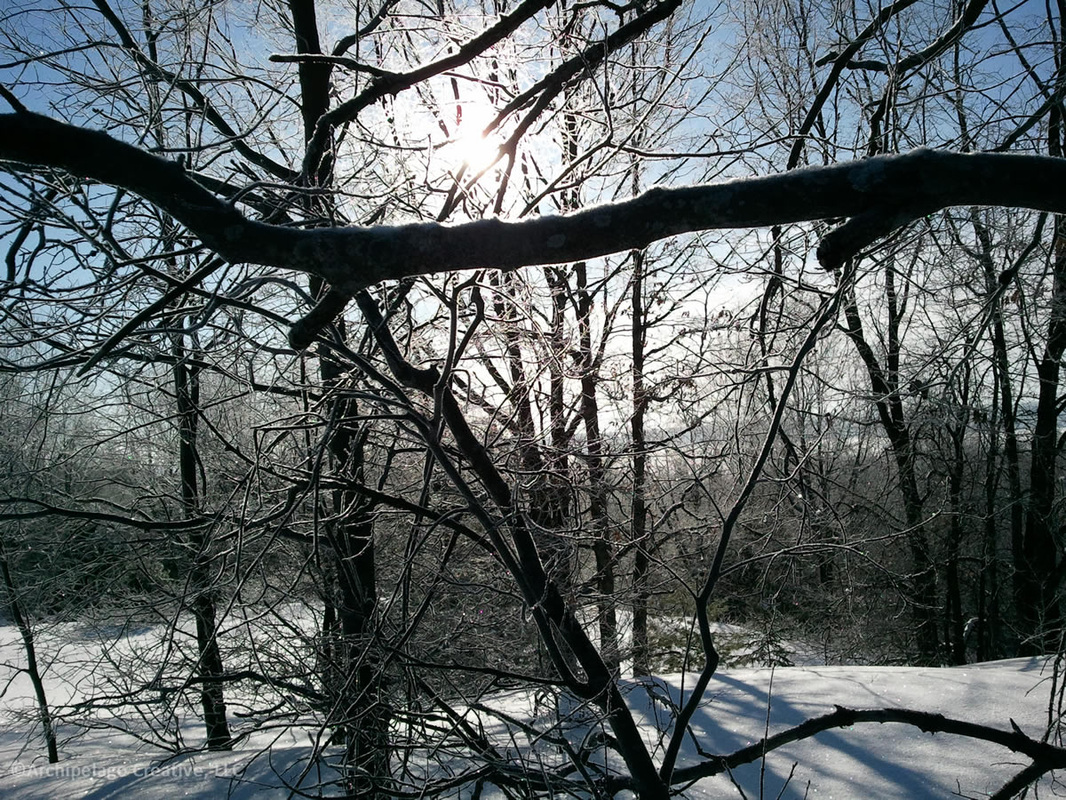
Yesterday we were out on our standard dog walk when we came out on a high place overlooking the land east of Traverse City. Everything had been coated with frost during the night, it was clear and the sun was bright, so the entire landscape sparkled like someone had thrown tinsel over everything. This is known as hoarfrost, which forms when the air is moist and the temperature drops quickly at night. This quick cooling causes the trees and things to be colder than the air, so the moisture in the air goes straight from water vapor to ice crystals, making beautiful patterns.

We have been treated to lots of interesting phenomena during this cold, cold winter. Several days ago it was sun dogs, those chunks of rainbows that appear on either side of the sun when the air has ice crystals suspended in it. Two nights ago, there was a pillar of fire as the sun set (cheesy cell-phone photo to the right), probably due to similar icy circumstances. All the Great Lakes are frozen, possibly causing our current below-zero temperatures.
Which has got me thinking about how the wild animals can handle this winter. Deer were especially on my mind, as the deep snow and cold temperatures must make their lives difficult. It sounds like it has been difficult for them, but perhaps that’s not a bad thing, biologically speaking. The strong will survive. And this weather may be good for smaller animals, as their predators find them harder to find.
The folks on Mackinac Island have been hosting deer and coyotes this winter. It is amazing how quickly the animals take advantage of the ice cover to check out new places. The posts I’ve seen have been celebrating deer on the Island. But if they're still there in the spring, I’m wondering if they'll eat the wildflowers. When you visit North and South Manitou Islands, you immediately notice how open the forest is on North Manitou, with much less undergrowth than South Manitou. There are deer only on North Manitou.
But the light is changing. The crows are cawing loudly, and the woodpeckers are drumming. Hopefully we can all hang in there until spring!
The folks on Mackinac Island have been hosting deer and coyotes this winter. It is amazing how quickly the animals take advantage of the ice cover to check out new places. The posts I’ve seen have been celebrating deer on the Island. But if they're still there in the spring, I’m wondering if they'll eat the wildflowers. When you visit North and South Manitou Islands, you immediately notice how open the forest is on North Manitou, with much less undergrowth than South Manitou. There are deer only on North Manitou.
But the light is changing. The crows are cawing loudly, and the woodpeckers are drumming. Hopefully we can all hang in there until spring!


 RSS Feed
RSS Feed